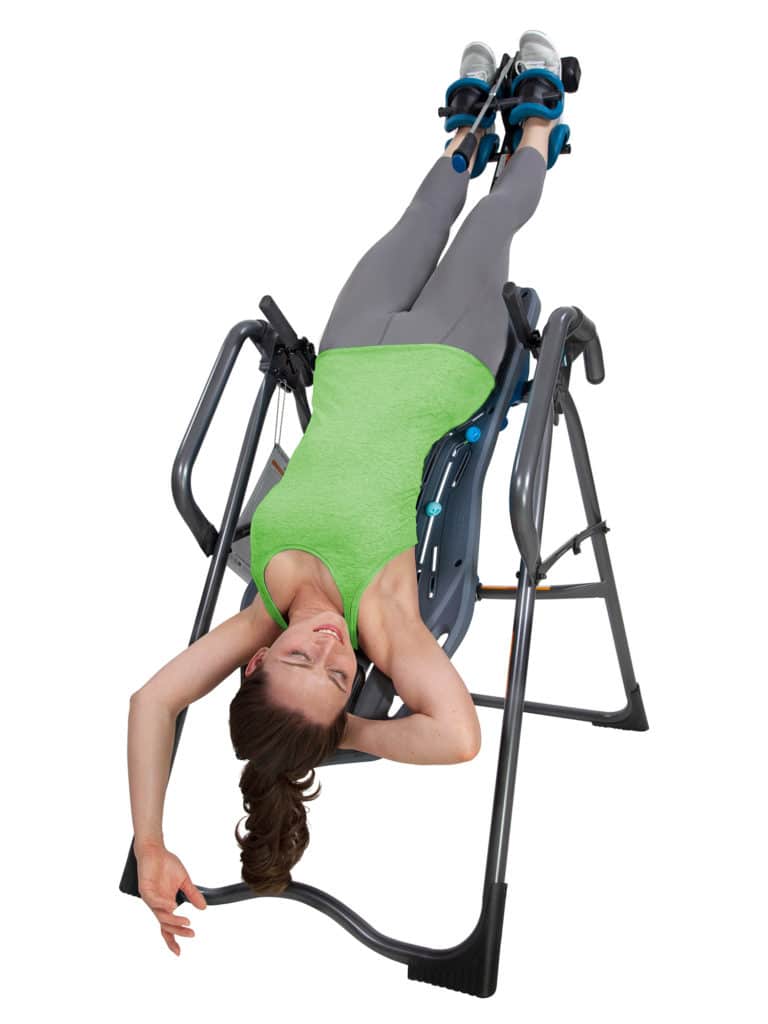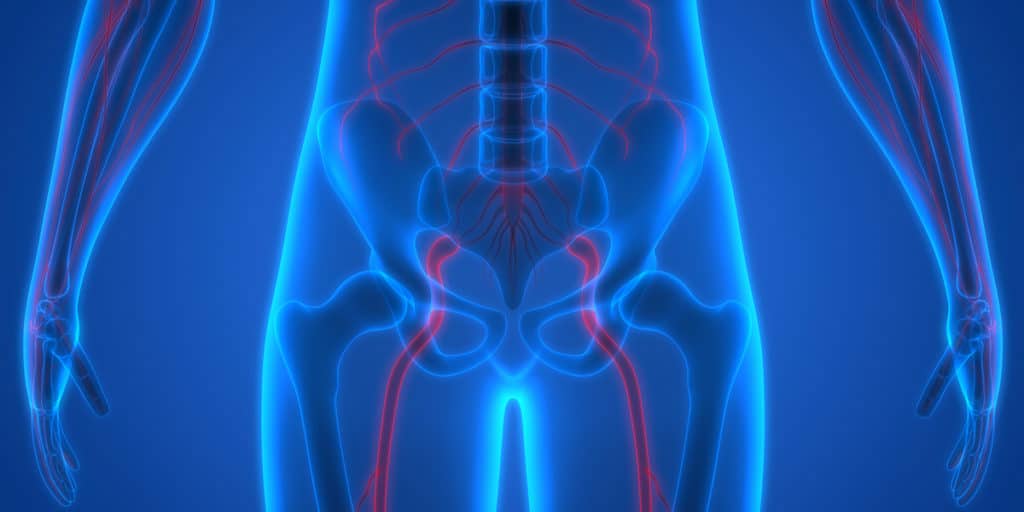Sciatic nerve pain is associated with radiating pain that runs along the path of the sciatic nerve. This nerve runs from your lower back, and branches out across your buttocks and hips, eventually traveling down each leg. Sciatica pain is commonly found only on one side of the body can appear as numbness or tingling, inflammation, or pain in the affected leg and hip.
The pain associated with sciatica does not usually appear overnight but comes on gradually. Some people experience severe, debilitating pain, while others have only infrequent episodes of pain. Thankfully, there is a natural, non-invasive option that has been shown effective in numerous studies: inversion therapy (or inverted decompression). There is an FDA-Registered 510(k) Medical Device that you can use in your own home to relieve disc-related back pain.
First, we’ll look at the condition and what causes it, then explore this effective form of pain relief for sciatica.
Sciatica Causes
Common causes of sciatic nerve pain are herniated discs, bone spurs on the spine, degenerative disc disease, or narrowing of the spine which compresses a portion of the nerve (also known as spinal stenosis). The compression of the sciatic nerve causes painful symptoms but usually has an underlying cause.
Sciatica Relief
While in extreme cases, surgery may be necessary to help relieve the symptoms, most experts agree that pursuing non-surgical options for sciatic nerve pain is a good first step.
In fact, one study found concerning statistics comparing two groups of patients with disc degeneration or herniations, half of which had surgery and half did not. After two years, just 26% of those who had surgery returned to work, compared with 67% of those who didn’t have surgery! Perhaps the most troubling is the 41% increase in the use of pain killers for those who had surgery.
So what are your options? Common, non-invasive techniques for relieving back pain include:
- Increasing core muscle strength
- Heat/Ice treatments
- Pain medications or steroid injections
- Chiropractic or manual manipulation
- Acupuncture
- Massage Therapy
- Inverted Decompression / Inversion Therapy
How Inversion Helps with Sciatic Nerve Pain
Inverted decompression (inversion therapy) is a form of gravity-assisted traction that decompresses all weight-bearing joints and elongates the spine, widening the space between the vertebrae and taking pressure off the nerves that run through openings in the spinal column.
With the pressure off, the spine works to naturally realign and the discs are able to rejuvenate, absorbing nutrient-rich fluid to help maintain shock absorption and flexibility. Muscles are relaxed and stretched, relieving painful tension and helping to maintain proper support for the spine.
One preliminary study actually showed a dramatic 70.5% reduction in the need for surgery for sciatic pain patients who routinely used a Teeter Inversion Table.
After the conclusion of the study, researchers concluded that “intermittent traction with an inversion device resulted in a significant reduction in the need for surgery,” and noted that the potential economic impact to healthcare is “very significant.”
Benefits of an Inversion Table
While many forms of therapy can only be performed under professional care, inverted decompression can be done safely and with little effort in the comfort of one’s own home, when using the proper equipment.
Teeter Inversion Tables are registered with the FDA as a 510(k) medical device. The Teeter is indicated for the relief of back pain, sciatica, herniated discs, degenerative joint and disc disease, and more.
With a variety of models available, offering various bells and whistles, the use of a Teeter Inversion Table remains essentially the same: once you’ve adjusted the table to your unique settings, simply secure your ankles and control your rotation with simple arm movements like a teeter-totter. You can control your angle of inversion – lesser angles mean less decompression, greater angles mean greater decompression – effectively allowing you to customizable therapy depending on your needs.
Inverting is a quick, easy, and effective way to improve your back health. Learn more about Teeter Inversion Tables.
In the video below, CEO Rylie Teeter shows you how to target and relieve sciatica pain with a Teeter Inversion Table.
Find Relief Now. Pay Later.
Now you can try Teeter in your own home FREE for 30-Days, 0% APR* with Affirm.
